Dry Start and Dark Start - what is behind them?
Table of contents
- The Dry Start
- The basics of the Dry Start method in aquascaping
- Setting up the aquarium using the Dry Start method
- Closing the aquarium
- How to maintain an aquarium set up using the Dry Start method?
- Filling the aquascape with water
- The Dark Start
- What exactly is the Dark Start and for which aquariums is it suitable?
- Set up the aquarium using the Dark Start method
- When can I continue with planting?
- How to continue after the Dark Start phase
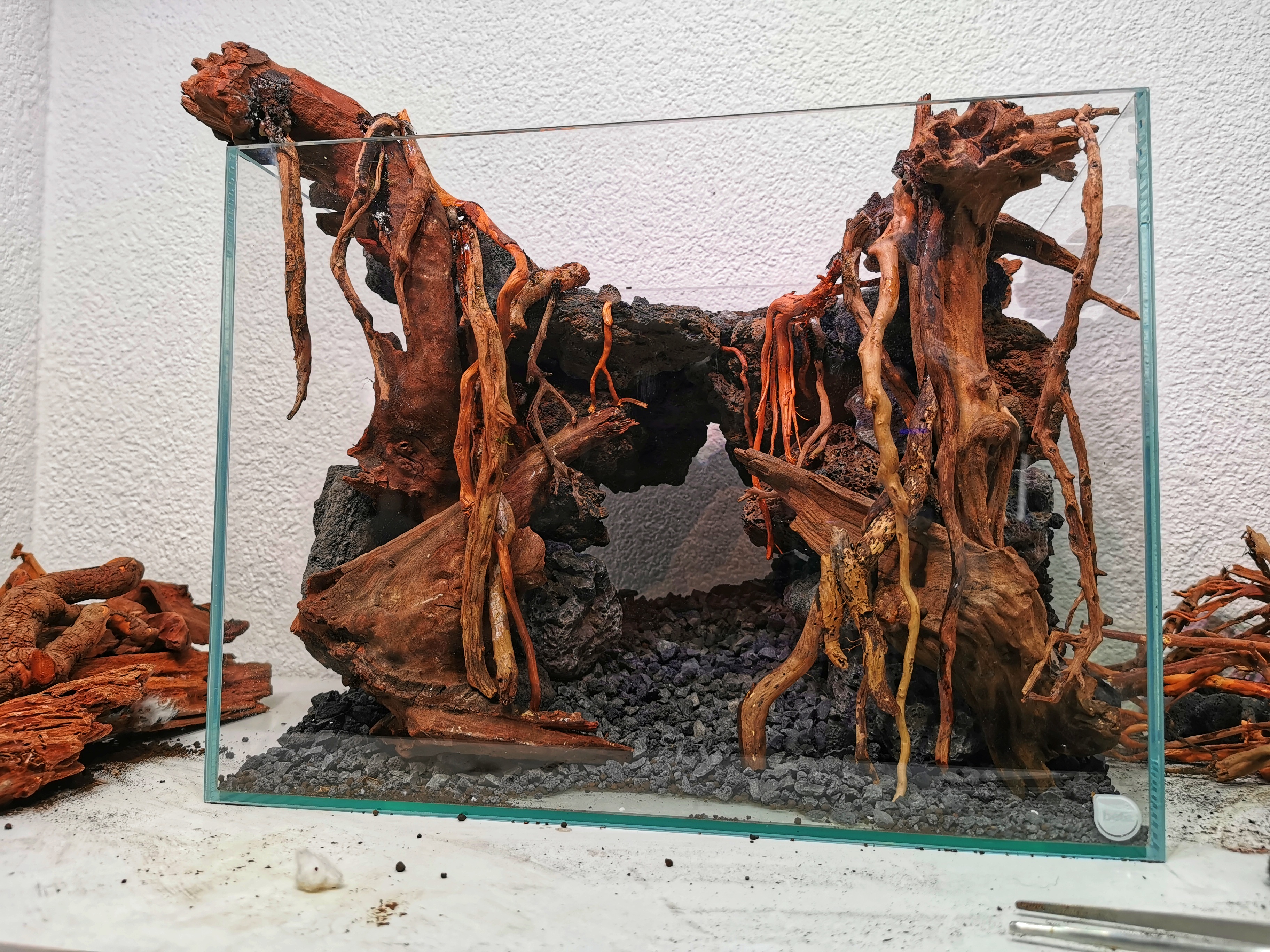
In plant aquaristics, there are always problems in the run-in phase of the aquariums - algae appear, plants shed their leaves, thick bacterial films form - so all in all, the aquascape looks very messy at first and not at all aesthetic. But in aquascaping, we want the beautiful effect, so resourceful aquarists have come up with starting methods for plant aquariums, with which you can elegantly avoid these problems.
The Dry Start
Dry Start is the English word for "dry". This alternative for starting a planted aquarium or aquascapes is especially recommended for aquascapes and planted aquariums with an emphasis on finely structured bottom-covering plants and mosses.
Experience has shown that these aquarium plants have a particularly hard time growing in flooded aquariums - fine ground cover plants usually do not have long, robust roots, but rather fine root systems. They tend to sprout in normal soil even before they can grow firmly. Water mosses have no roots at all, but short rhizoids, if any. They also take a long time to establish under water.
The basics of the Dry Start method in aquascaping
The Dry Start method takes advantage of the fact that most aquarium plants are not actually true aquatic plants, but rather marsh plants that can survive both above and below water.
The vast majority of aquarium plants fall into this category - they are also grown above water in aquatic plant nurseries because they grow so much faster and stronger. Conventionally grown aquarium plants are therefore in their emersed above-water form when purchased and only convert to their underwater form when in the aquarium. In vitro plantsare also in the emersed form when grown.
Conversion to the submerged underwater form is another factor that delays the already lengthy growing process for fine-textured foreground plants for the aquarium. With Dry Start, it is even an advantage that the aquarium plants have not yet been converted.
With Dry Start, the ground covers and mosses with their fine roots and rhizoids are given enough time to become firmly anchored in the substrate so that they will later remain reliably in place when the aquarium is refilled.
Please note: Some aquarium plants are not marsh plants, but true aquatic plants. They do not have an emerse form and cannot survive above water. True aquatic plants such as Vallisneria or Blyxa, as well as true aquatic mosses such as Fissidens fontanus do not form a land form and for this reason are definitely not suitable for the Dry Start method.
Long stem plants, Anubias, Cryptocorynes or other rosette plants such as Echinodorus also tend to dry out first during Dry Start.
Therefore, the Dry Start method is ideal for aquascapes with a large proportion of foreground plants or mosses, for example, it is optimal for an iwagumi planted only with ground covers.
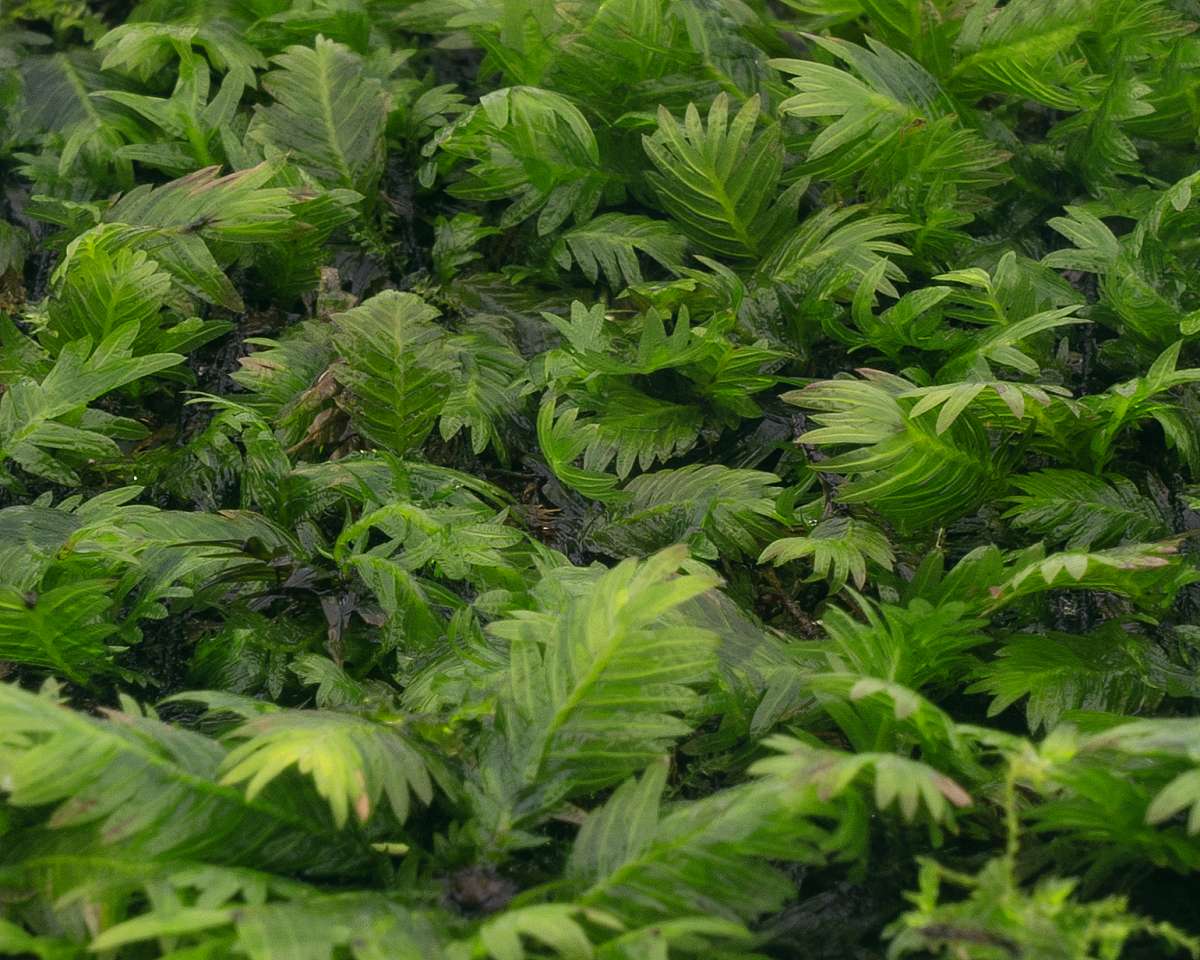
Setting up the aquarium using the Dry Start method
With Dry Start, you start setting up the aquarium as usual. First you build up the substrate from Soil and additives, then you put the hardscape from roots and stones in place. Then spray everything thoroughly with water from a floral sprayer so that the Soil is well moistened. This makes it easier for the plants to take root.
Then plant the foreground or, in the case of Iwagumi, the entire aquascape. The sprayer is used again - the plants are moistened generously when they are planted so that they do not dry out.
Closing the aquarium
In Normal Start, the aquarium would be filled with water after planting, but in Dry Start, the water is left out for now. We carefully seal the tank with plastic wrap so that nothing can dry out. The foreground plants can grow well in the high humidity that results from the generous spraying without their leaves drying out.
How do you maintain an aquarium set up using the Dry Start method?
The care of such a Drystart aquascapes is simple: it runs without technology, only with light. The lighting time can be 8-10 hours. The cling film is opened once a day to allow some air exchange. If necessary, spray again.
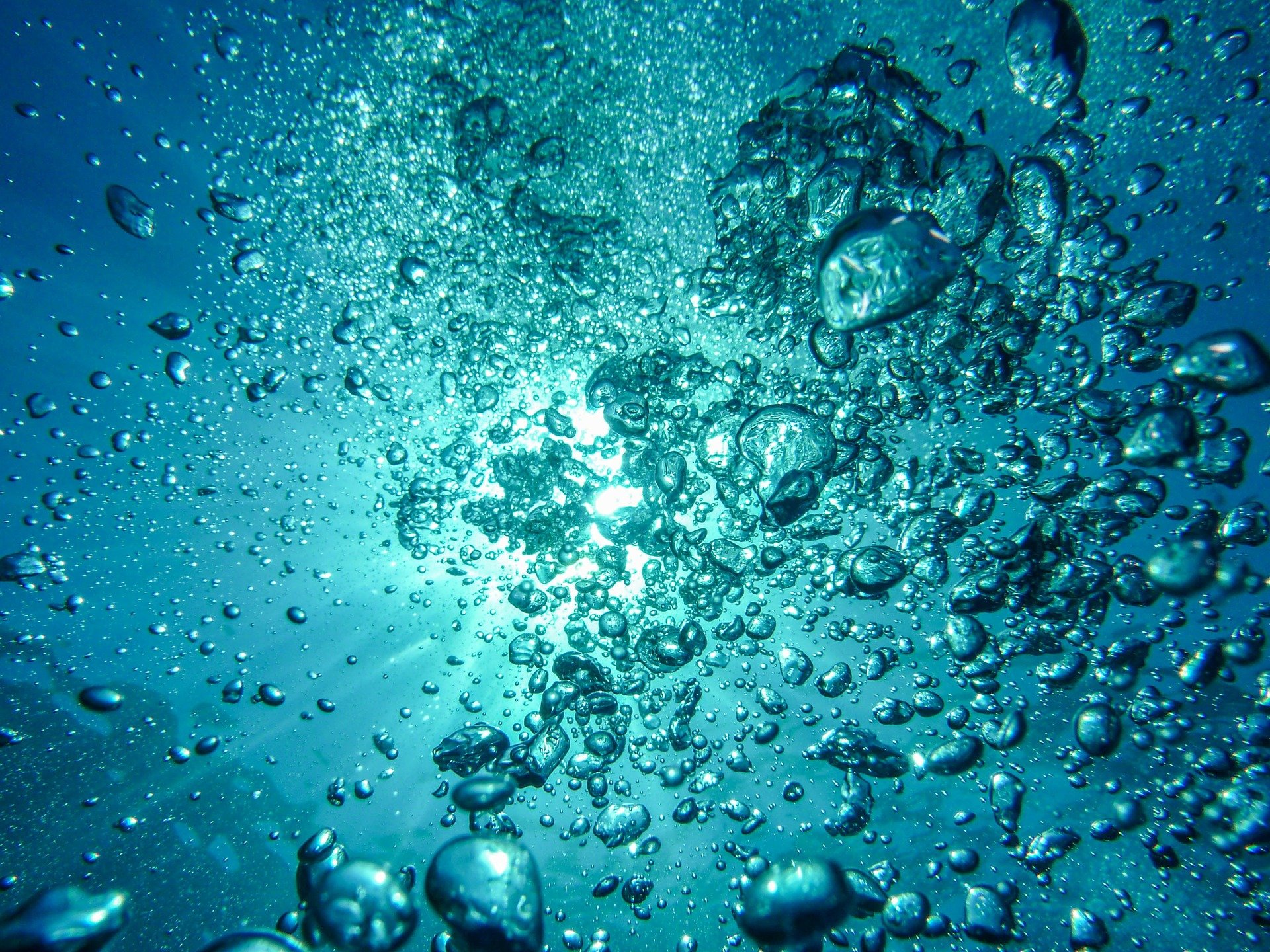
Fill the aquascape with water
When the ground covers and mosses are well rooted after about 4-6 weeks, it is time to fill the aquarium completely. First, place all the other plants that need to be in the aquascape - aquatic plants such as vallisnerias, stem plants or larger rosette plants.
Before filling, it is best to cover the bottom of the aquascape with Zewa, crumpled newspaper or foil so that the substrate is not stirred up and the layout damaged when filling in the water.
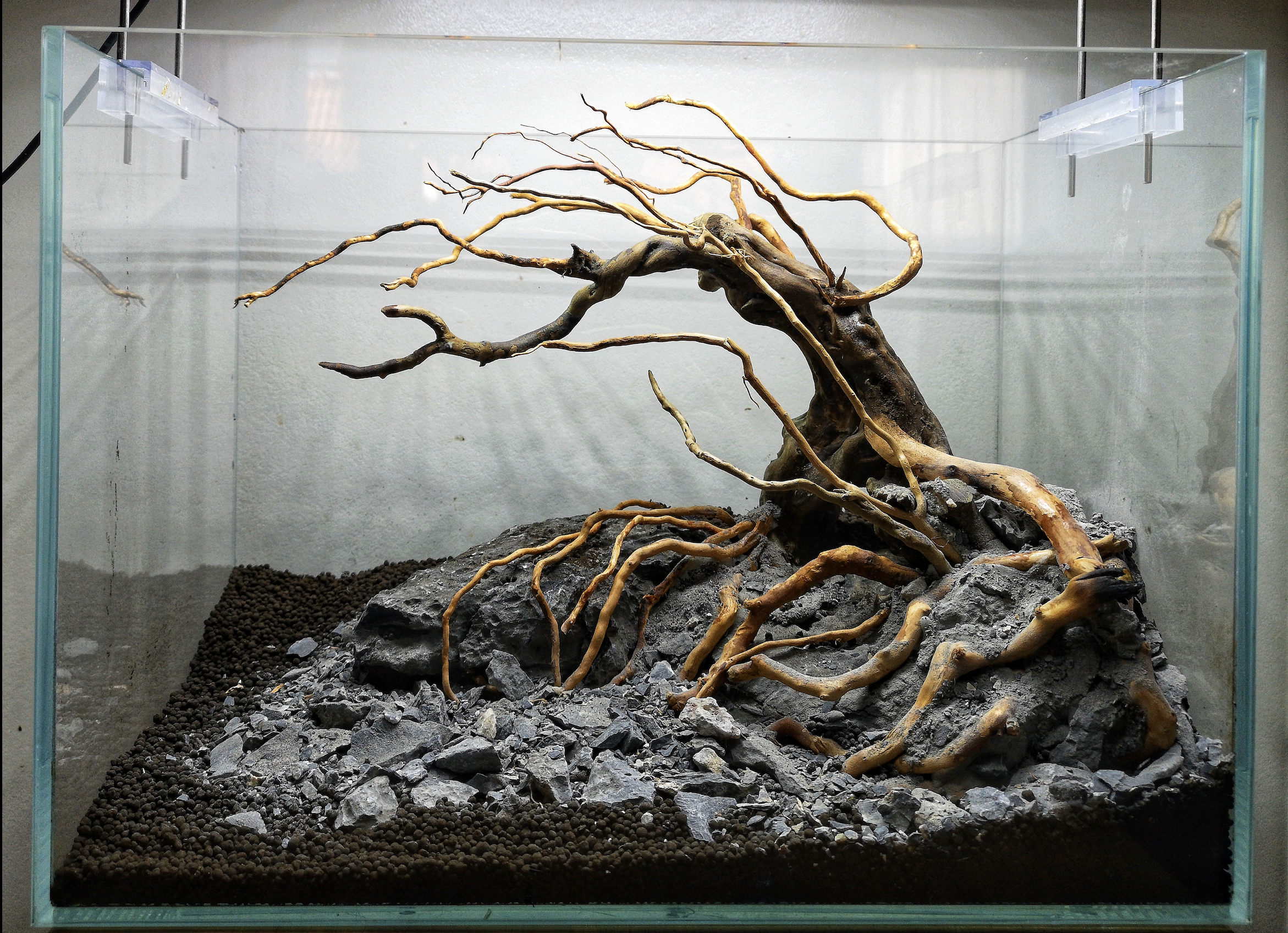
The Dark Start
The Dark Start is a relatively new method in aquascaping. It hasn't quite caught on yet, and it's not suitable for all planted aquariums. Here hides the English word "dark" for "dark", so we are talking about a dark start of the aquarium, so to speak.
What exactly is the Dark Start and for which aquariums is it suitable?
With the Dark Start everything remains dark at first, the light above the aquarium is not switched on. In an aquarium with sand or gravel, the procedure is more or less pointless, but if you use pre-fertilized plant soil, it becomes interesting: Often, the soil is so saturated with nutrients that it can lead to massive algae blooms in the aquascape at the beginning. The newly installed plants are still in the middle of the conversion phase and do not grow well, so they consume virtually nothing in the very phase in which most of the nutrients are released from the Soil. Then comes the hour of the algae.
To avoid heavy, unsightly algae infestation in the aquascape, one therefore resorts to the Dark Start.
Setting up the aquarium using the Dark Start method
The aquascape is first equipped with substrate (fertilized plant soil, possibly a substructure of lava granules and, if necessary, substrate additives), then the hardscape is built up from roots and stones.
In the next step, the whole aquarium is carefully flooded with water, in such a way that the substrate is not stirred up. Now connect the heater and the filter.
Important: The aquarium is not planted, and no animals get into it! The light remains off, fertilizer is also not given and also the CO2 system has a break.
If the aquarium is partially illuminated by the sun or receives a lot of artificial indirect light from room lighting, the panes should be darkened with newspaper or cardboard - any light would only feed the algae and could then still cause an algae plague.
The filter ensures that the water is circulated. The excess nutrients (especially ammonium) are gradually flushed out of the soil and metabolized by the filter bacteria. The filter bacteria thus also directly benefit from rich food, and the nitrogen cycle can unfold in peace without endangering the stocking of the aquarium.
It is also an elegant way to avoid problems that can arise during the start-up phase due to the initially very intensive ion exchange activity of the brine. Sometimes this strong activity causes the soil to overacidify and the plants to die. However, after the initial period, this activity in the soil is somewhat slowed down and negative effects on the plants are no longer expected.
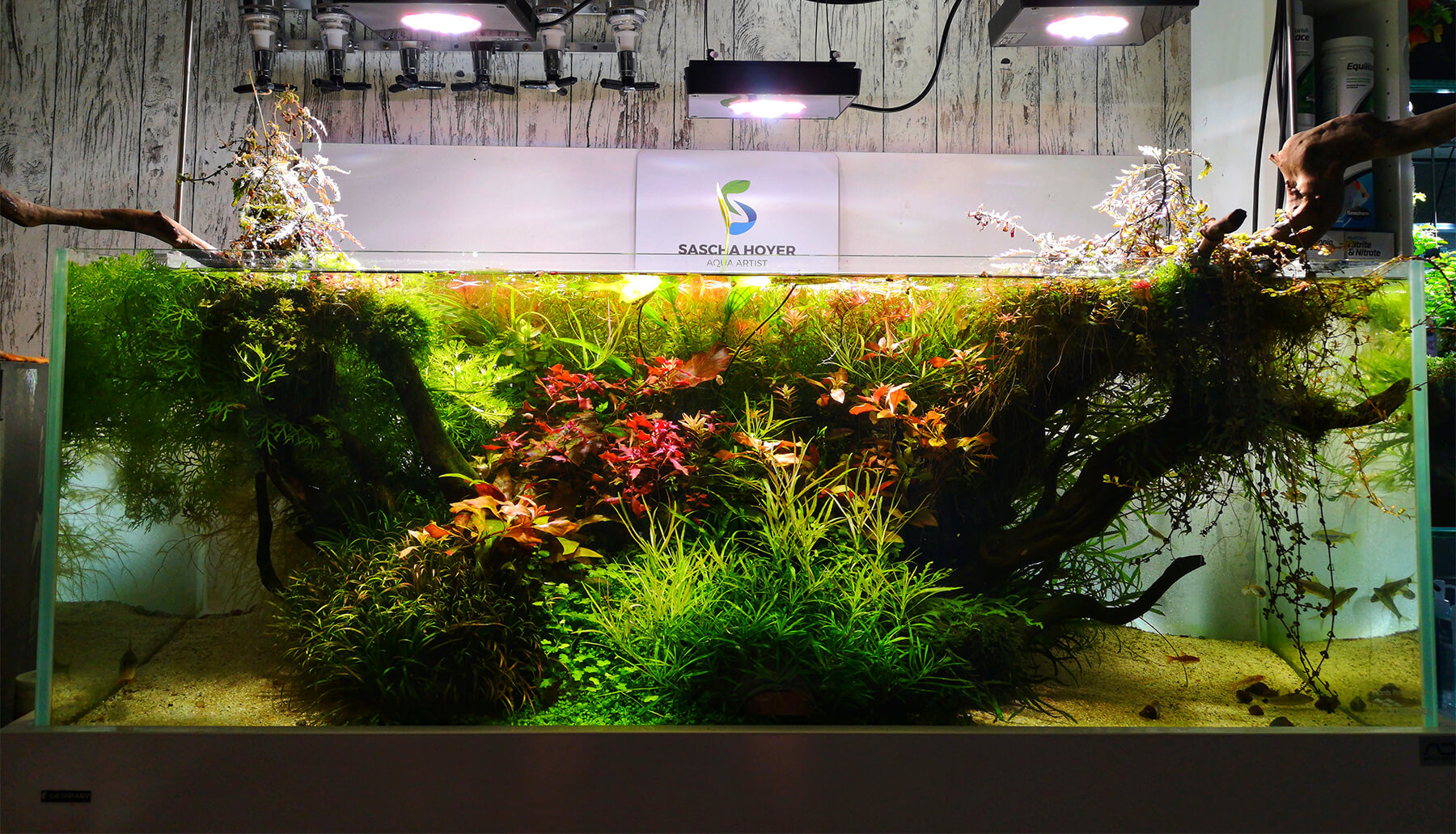
When can you continue planting?
At the latest when ammonium and nitrite are no longer detectable in the water, the aquascape can be planted normally after the Dark Start and then also very quickly populated with animals.
Water changes during the Dark Start phase accelerate the run-in period, as this removes the worst peaks of nutrients from the water. However, you should plan about 4 weeks in any case for this way to start the aquarium.
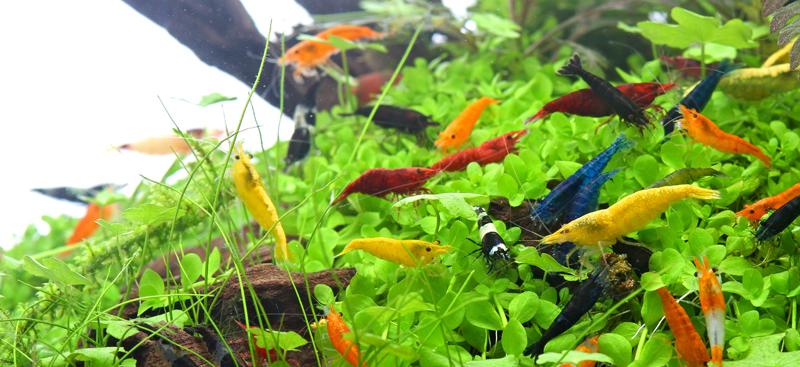
This is how it continues after the Dark Start phase
Now the water is drained to the level of the substrate and the aquarium is planted normally. In a very moss-heavy layout or a layout that is heavily planted with ground covers, you could now add another Dry Start phase, although in this case you would risk the filter bacteria that have already formed.
When the aquascape is finally filled, the bottom is again lined with newspaper, foil or paper towels so that the substrate is not stirred up by the incoming water.
Then turn on the lights, connect the CO2 fertilizer (if present) and continue to operate the aquascape as usual. It is possible that some algae will still appear in the initial period, as long as the plants cannot yet fully utilize the available nutrients due to the changeover to underwater life, but there is no longer any need to worry about extreme nutrient peaks and thus no extreme outbreaks of algae.
Before filling the aquascape with fish and/or invertebrates , the water values must be checked in any case: Neither ammonium (NH4/NH3) nor nitrite (NO2) should be measurable anymore. Often the Dark Start already shortens the run-in phase decisively.
